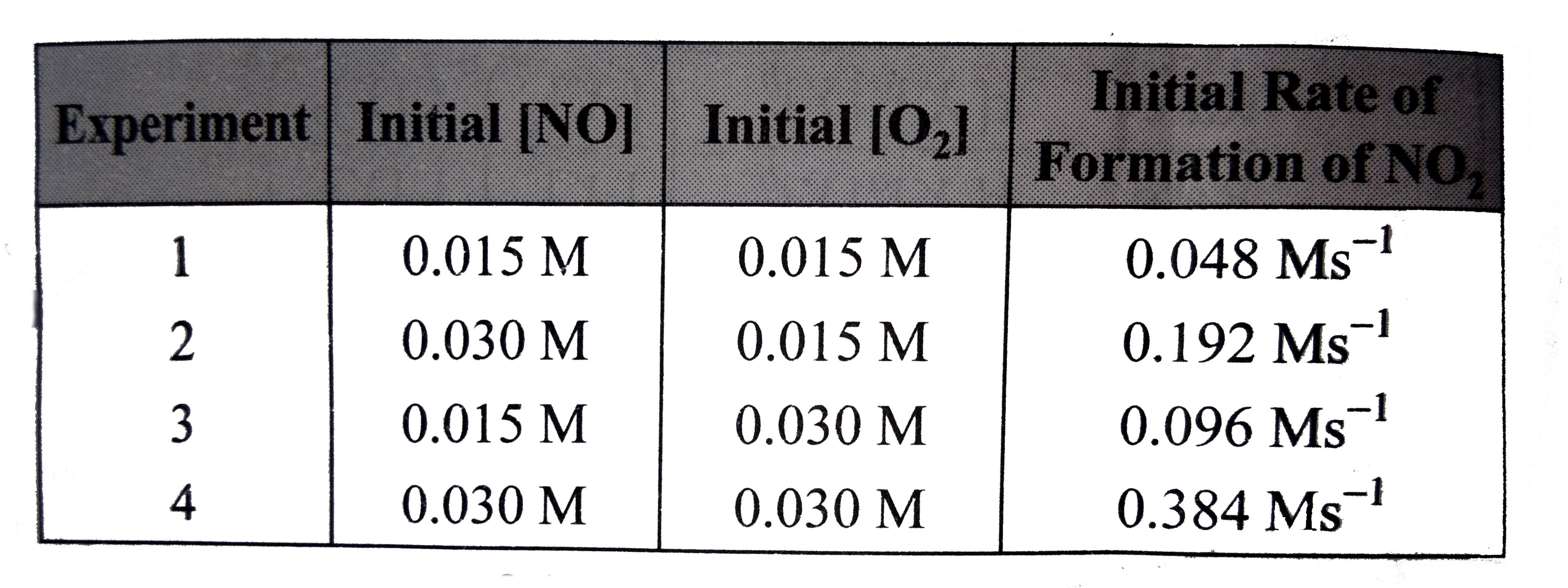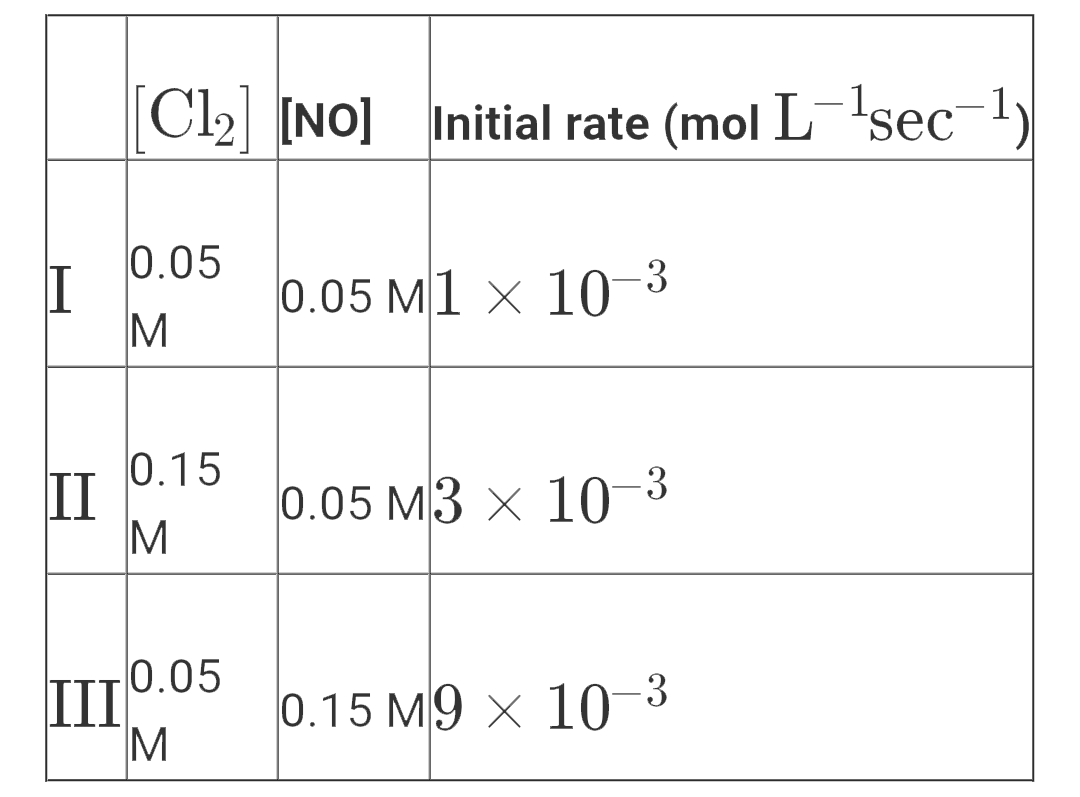Find the individual and overall order of the following reaction using the given data .
2NO(g)+Cl2(g)→2NOCl9g)

Rate =k[NO]m[Cl2]n
For experiment 1 , the rate law is ,
Rate1=k[NO]m[Cl2]n
7.8×10−5=k[0.1]m[0.1]n (1)
For experiment 2, the rate law is
Rate2=k[NO]m[Cl2]n
3.12×10−4=k[0.1]m[0.1]n (2)
For experiment 3, the rate law is
Rate3=k[NO]m[Cl2]n
9.36×10−4=k[0.2]m[0.3]n (3)
For experiment 3, the rate law is
Dividing Eq (2) by Eq (1) we get ,
3.12×10−47.8×10−5=k[0.2]m[0.1]nk[0.1]m[0.1]n
4=(0.20.1)m⇒22=2m∴m=2
Therefore the reaction is secondary order with respect to No .
Dividing Eq(3) by Eq(2) we get ,
9.36×106(−4)3.12×10−4=k[0.2]m[0.3]nk[0.2]m[0.1]n
3=3n∴n=1
Therefore the reaction is first order with respect to Cl2 .
∴ The rate law is , Rate = k[NO]2[Cl2]1
The overall order of the reaction =(2+1)=3.
Topper's Solved these Questions
- CHEMICAL KINETICSBOOK - FULL MARKSCHAPTER - CHEMICAL KINETICSEXERCISE - TEXTBOOK EVALUATION (I. CHOOSE THE BEST ANSWER.)
25 Videos
- CHEMICAL KINETICSBOOK - FULL MARKSCHAPTER - CHEMICAL KINETICSEXERCISE - TEXTBOOK EVALUATION (II. ANSWER THE FOLLOWING QUESTIONS)
30 Videos
- CHEMICAL KINETICSBOOK - FULL MARKSCHAPTER - CHEMICAL KINETICSEXERCISE - ADDITIONAL QUESTIONS (5 MARK QUESTIONS)
10 Videos
- CARBONYL COMPOUNDSBOOK - FULL MARKSCHAPTER - CARBONYL COMPOUNDSEXERCISE - ADDITIONAL QUESTIONS (5 MARKS QUESTIONS)
34 Videos
- CHEMISTRY IN EVERYDAY LIFE BOOK - FULL MARKSCHAPTER - CHEMISTRY IN EVERYDAY LIFE EXERCISE - ADDITIONAL QUESTION ( 5 Mark Questions )
2 Videos
Similar Questions
Knowledge Check
For the reaction : Cl2(g)→2Cl(g)
AΔH is positive, ΔS is positiveBΔH is positive, ΔS is negativeCΔH is negative, ΔS is negativeDΔH is negative, ΔS is positiveThe air oxidation of nitric oxide is one of the reactions that contributes to the formation of acid rain:
2NO(g)+O2(g)→2NO2(g)
Some initial rate data are collected

Two overall order of the reaction isAtwoBthreeConeDzeroThe order and molecularity of the chain reaction,
H2(g)Cl2(g)kv−−→2HCl(g)are :A2,0B0,2C1,1D3,0
The free enegry changes for the two reactions given below are
a. SO2(g)+CI2(g)→SO2CI2(g),ΔG=−2270cal
b. S(Rhom)+O2(g)+CI2(g)→SO2CI2(g),ΔG=−74060cal
Find ΔG for the reaction S(Rhom)+O2(g)→SO2(g)
View SolutionPredict which of the following reaction will have appreciable concentration of reactants and products?
Cl2(g)+2NO(g)⇔2NOCl(g),Kc=3.7×10−8
View Solution2NO(g)+Cl2(g)=2NOCl(s)
This reaction was studied at −10∘C and the following data was obtained
run[NO]0[Cl2]0r010.100.100.1820.100.200.3530.200.201.40
[NO]0and[Cl2]0 are the initial concentrations and r0 is the initial reaction rate The overall order of the reaction is ___________ . (Round off to the Nearest Integer).
View SolutionThe given data are for the reaction, 2NO(g)+Cl(g)→2NOCl(g) at 298K

The rate law of the reactions is
View SolutionThe given data are for the reaction, 2NO(g)+Cl(g)→2NOCl(g) at 298K

The rate law of the reactions is
View Solution

